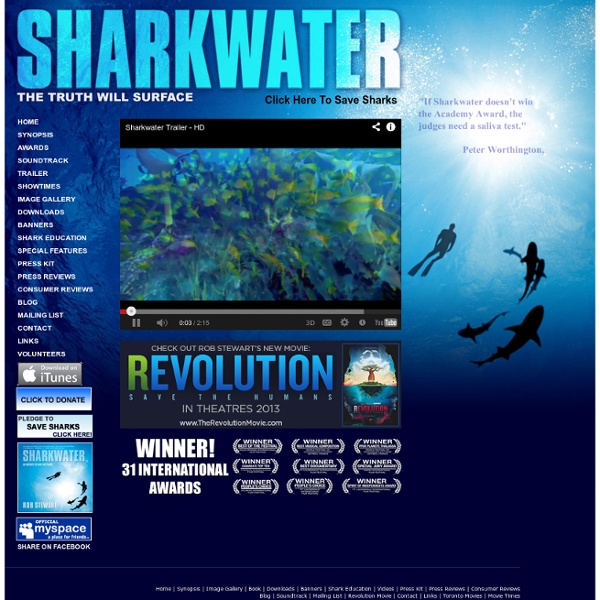



Energy [R]evolution The Energy [R]evolution Scenario has become a well known and well respected energy analysis since it was first published for Europe in 2005. In 2012, the fourth Global Energy [R]evolution scenario was published; earlier editions were published in 2007, 2008 and 2010. The Energy [R]evolution 2012 provides a consistent fundamental pathway for protecting our climate through investment in renewable energy. It's about getting the world from where we are now to where we need to be by phasing out fossil fuels and cutting CO2 emissions while ensuring energy security. The expert consensus is that this fundamental shift in the way we consume and generate energy must begin immediately and be well underway within the next ten years in order to avert the worst impacts of climate change.
Overfishing 101: How Ocean Fish Populations are Managed in the U.S. – National Geographic News Watch In the second post of a special series to mark the 35th anniversary of the U.S. Magnuson-Stevens Fishery Conservation and Management Act, a law that is helping to rebuild America’s depleted ocean fish populations and ensure their long-term sustainability, Lee Crockett looks at some of the basics of why all Americans should care about how our fish are managed. By Lee Crockett Shark Diver : Shark Diving : Swimming With Sharks How could our loving sharks possibly hurt them? After all, we want to protect them and are fighting those who are hurting them. Why would I even suggest such a ridiculous thing?shark diving, cage diving, swimming with sharks, Guadalupe Island, Great White Shark, shark conservation OK, lets look at what is going on. I have written about what conservation various groups are doing here.
Hope to Haiti It will take anywhere from 3 seconds to 1 minute for your pic to upload, depending on how big it is. You're going to see this message every time you post a new pic. So, we're making the text really long so that it'll take you at least five picture uploads to read it all. Oceans Food, work, fun, adventure, sport and life – not many things can give us all those things in one. Every day the oceans give us the air we need to breathe; the weather to grow crops; water to support the smallest to the largest animals on earth and 80% of all species; vast ice flows to help regulate our climate; millions of jobs and a life-time of pleasure. Send us your favourite ocean image and it could be featured here! You and I are alive right now because of the oceans.
Shark Pictures - 1000 Pictures Of Sharks - Shark Gallery - www.Shark-Pictures.com Welcome to the web's largest collection of shark pictures, Shark-Pictures.com. This site is a collection of shark pictures take from all over the world and submitted by our visitors. The pictures are organized by shark species, and we currently have of 50 categories! If you have a shark picture you would like to contribute, you can upload it on the uploads page.
Earth: our water world Rich biodiversity Life began in the oceans, and continues to thrive in its diverse habitats. With as many as 100 million species - from the largest animal that has ever lived on Earth, the blue whale, to the tiniest bacteria - marine biodiversity far outweighs that on land. And new species are being discovered all the time. Vital role for life on land... The oceans also have a huge influence on us landlubbers. Let's Imagine a New Future Now! Most people know that caterpillars undergo a process called metamorphosis, a physical transformation that turns them into butterflies. Cells referred to as the imaginal cells are pivotal to this process. Imaginal cells are different than the rest of the caterpillar’s cells in that they contain within them the genetic coding and therefore, the blueprint of a flying creature, the butterfly. As the body of the caterpillar disintegrates, the imaginal cells remain quiescent, as if incubating literally with a new imagination. The immune system of the caterpillar sees them as different, even attacks them, but the imaginal cells remain immune to this onslaught. Slowly, as the body of the caterpillar becomes soft, mushy, and amorphous, the imaginal cells begin to connect with each other and start to use the decaying carcass as its nutritive soup.